The lights of Tokyo always form an irresistible backdrop to some interesting characters; for what must be the fourth or fifth year running, I’m back (I’ve honestly lost count) at what I consider to be the best season – autumn, before the weather gets unpleasant, the skies are still blue, and there’s an orange leaf or twenty. An unusually warm summer this year resulted in not much of an autumn – the leaves weren’t anywhere near as extensive as in 2013, and in 2014 I was a week too late – ah well, the vagaries of nature. Nevertheless, Tokyo is so extensive that I feel as though you could live there your entire life and barely scratch the surface photographically. On this trip, I tried out some different hardware for cinematic work compared to my normal 55/85 Otus – I wanted to see if smaller, lighter could also apply to cinematic work albeit with slightly reduced maximum apertures. I used the Zeiss 1.8/85 Batis (Sonnar) and the Zeiss 2.8/85 Sonnar, an older Contax design. What I found was the Sonnar actually produced a more pleasing rendering for this purpose – the Batis is razor sharp but I somehow prefer the softer, more rounded properties of the older lens – especially for out of focus foregrounds and skin. It is stronger at middle and close distances because of this; the Batis excels at longer distances because it differentiates between planes more easily. Neither is as good as differentiating as the 85 Otus, but that’s also a faster and better corrected (apochromatic) lens – the price we pay there is occasionally nervous bokeh and some onion rings under certain conditions. I digress: it is of course about applying the right tool to the right situation to get the desired images…enjoy! MT
This series was shot with a Sony A7RII, Zeiss 1.8/85 Batis, Contax Zeiss 2.8/85 Sonnar MMG and Zeiss 2.8/21 Loxia and post processed using the Cinematic workflow in Making Outstanding Images Ep.5. You can also look over my shoulder at the underlying postprocessing in the Weekly Photoshop Workflow series.
__________________
Bespoke Queenstown landscape and The Lisbon Masterclass (9-14 Mar 2016) are now open for booking
__________________
Ultraprints from this series are available on request here
__________________
Visit the Teaching Store to up your photographic game – including workshop and Photoshop Workflow videos and the customized Email School of Photography. You can also support the site by purchasing from B&H and Amazon – thanks!
We are also on Facebook and there is a curated reader Flickr pool.
Images and content copyright Ming Thein | mingthein.com 2012 onwards. All rights reserved
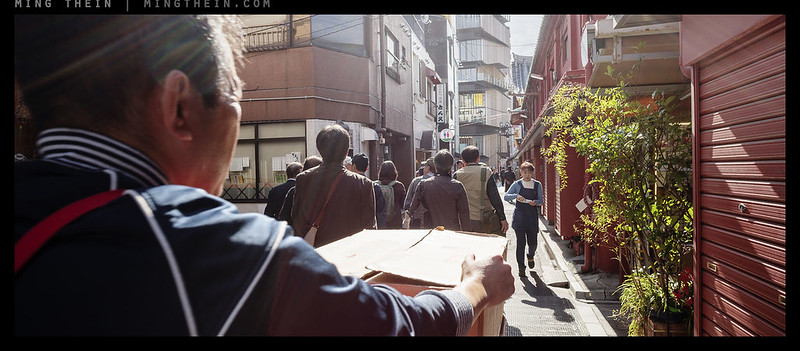

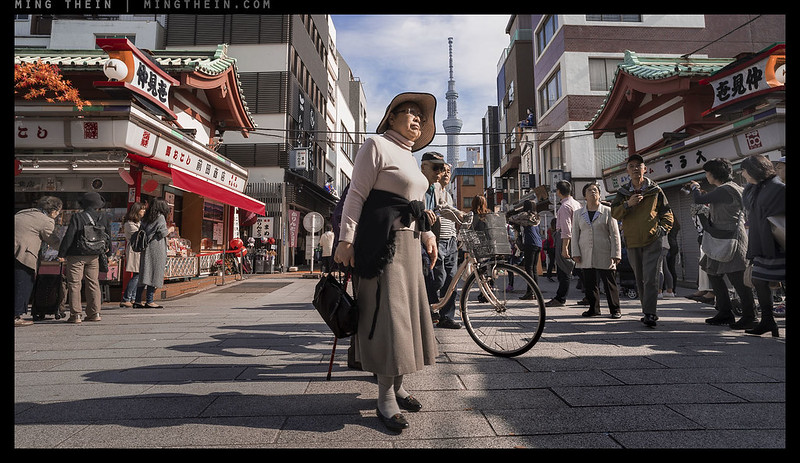
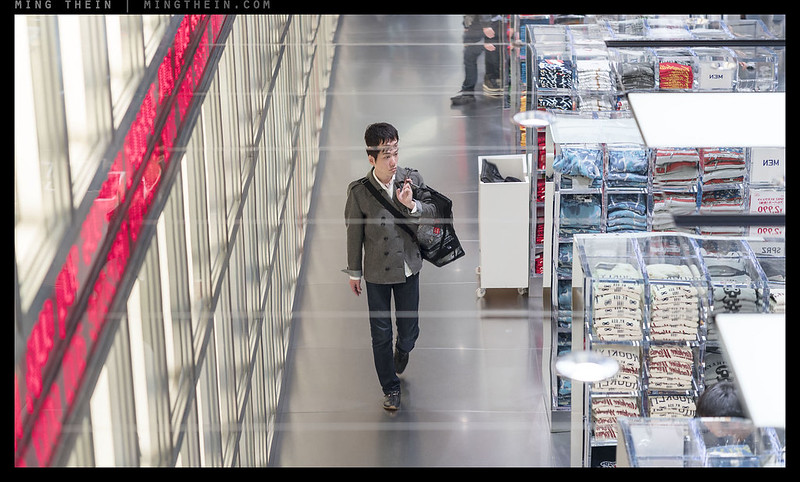


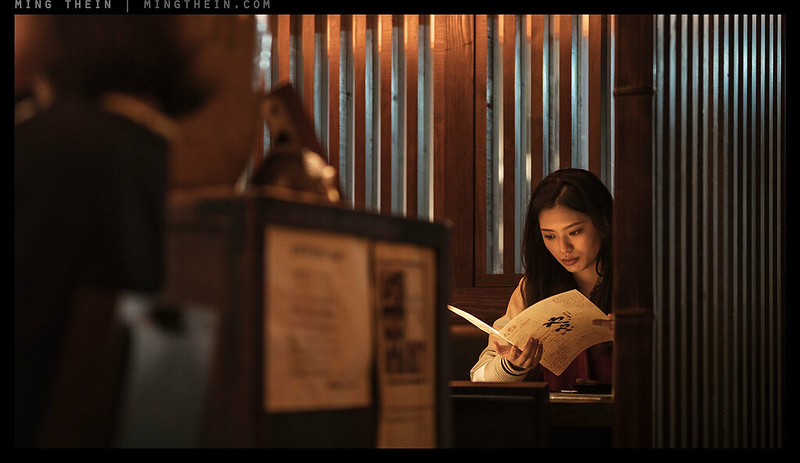
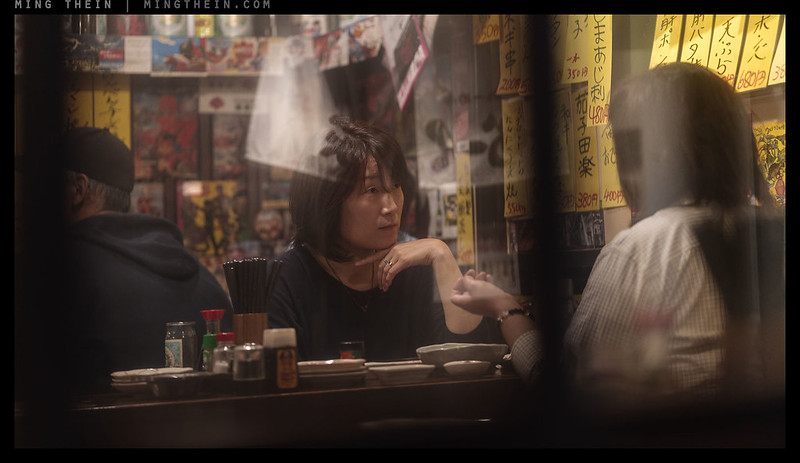
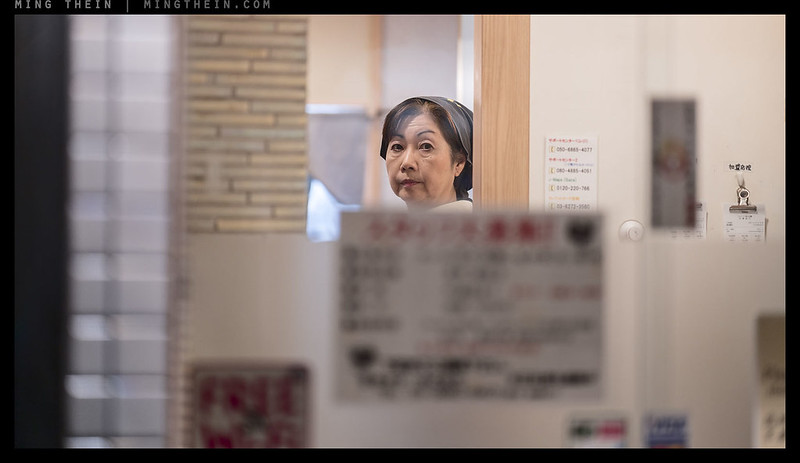
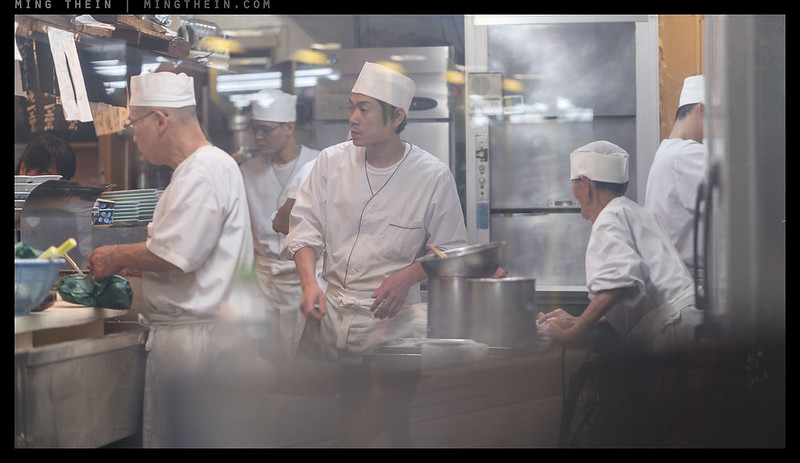
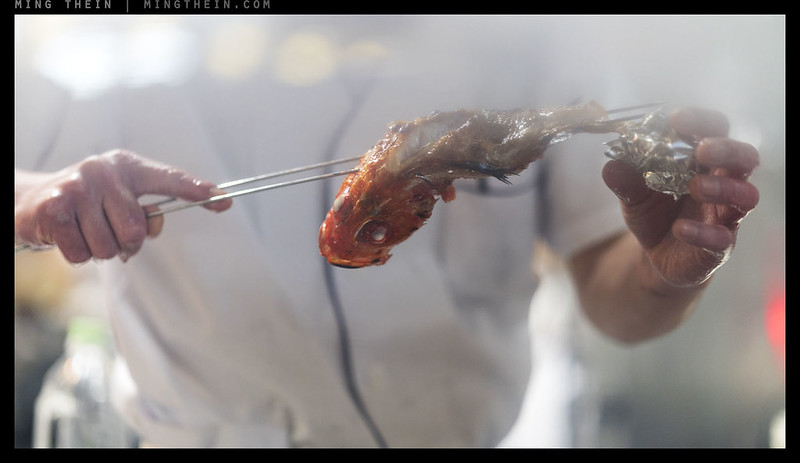

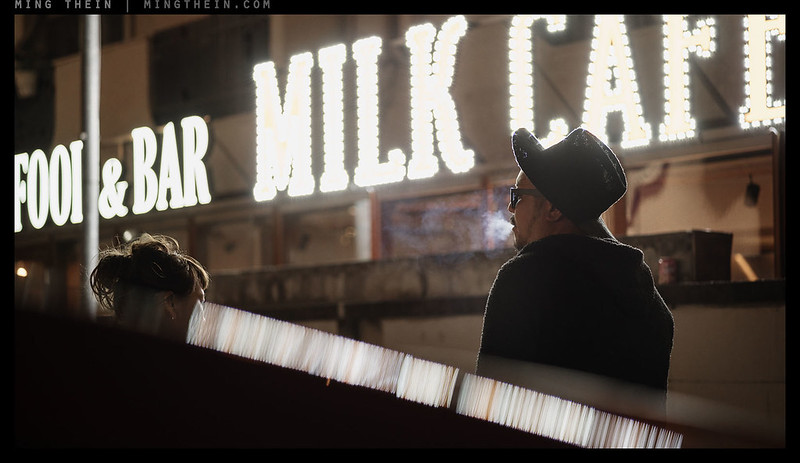





. There´re no rules which format is filmic which not, depends on individual choice. Pawlikowski`s Oskar winning IDA was shot in b/w 4:3, an extremally filmic oevre with strong photographic quality. As to lenses everthing goes, from Citizen Kanes wides upwards. Wonderfull japanese film maker Yasushiro Ozu used only one lens, a 50mm,which translates to 75mm in film terms in many of his films. Story goes that when presented with 40mm, a coming trend of using slightly shorter focal lenghts, said- no thank you, it doesn`t have feel of 50mm, explaining that it had to do with spacial relation and movement between two actors in different planes. But of course it`s all in movies.
Hi Ming.
I like the cinematic concept. Its fresh and I believe there is a room for a development.
Most of your cinematic shots are single frames. Did you consider sequences?
The kitchen shot and a fish close-up is a great example. It works great for me. Totally cinematic shots. I cant find more of them here,
I miss establishing shots too!
Tell me your thoughts on this.
Of course – I would do sequences in a complete project, but finding enough sequences to make sense in a candid setting without having any control over the subject matter is nearly impossible.
I have prblem posting a comment. Filled name and email but alas.
Is there a word limit?
Not that I’m aware of.
This one is showing up just fine…
Hi Ming (and TerryB; I’m jumping on his bandwagon here). Very, very, interesting subject and discussion (‘let’s bring it to a more intellectual level” – I feel challenged – ). OK.
To start off, what’s “cinematic”?
There’s no one cinematic style, as anyone who watches movies will confirm. There are many cinematic styles. For instance, it doesn’t take more than a few seconds to distinguish a British from an American movie (or tv series). It’s very obvious.
But to pick up on one of the traits of “cinematic” that Ming served up, the use of – shallow – depth of field. Usually treated carelessly in most movies, but lately I’ve seen examples where some thought and work had actually been put into that particular aspect.
Then there’s “Whitechapel”, a British (English?) tv series, very consciously shot, where extremely shallow depth of field plays an important role but, in a very striking way, it shifts (in a for me slightly headache inducing way) between two main subjects constantly. I’ve never seen that before. Cinematic? TerryB, can you comment?
The other thing was having an important but out of focus foreground, thereby singling out the real subject in the sort of middle distance. Yes, great technique (I usually got called out for sloppiness when I did that sort of thing, like photographing a group of three in a triangle, and focusing only on the person at the back), really effective, and cinematic.
I found (in your images) the light and colour treatment to be the most important contributng factor to “cinematiqueness” 😉
‘Whitechapel’ is very well shot.
Color treatment to influence mood, and an overall deliberateness to every element of the composition (even if not fully staged) are also important. That, and the use of foregrounds for transition, context, visual texture and flipping the switch between participant and observer…
Deliberateness to a composition is always good and even necessary. We’re up to our knees in randomly compositioned socalled street photography. An abomination, if I may say so.
If you can’t be bothered to take the trouble to previsualize your composition, what sort of photographer are you?
It goes beyond that – I would say it’s almost an obsessiveness over the details…for instance, does that empty glass in the corner serve as a clue for some part of the narrative that might happen later on?
Well. The story telling element certainly is very important but, compared to a movie (where everything is easy…) difficult to achieve in a still photograph (stills from a movie can and will always be associated with the story that the movie tells us). A photograph is just … a photograph. It has to have enough question marks to make one wonder about the story.
Obsessing over details is something some would admit to, and others wouldn’t. I like things to happen without any discernible effort on my part, without me breaking into a sweat…
No pain, no gain…and you can still make a sequence of images read like a series of scenes in a movie…
Yes, that’s a thought. It turns out that lately I mainly use my old(er) film slrs and some sort of ISO 400 film for “street” photography, and the 810 for portraits, kids and more “serious” stuff. A sequence is more difficult (but not impossible) to achieve without a winder. I do have a working MD-12 though.
I’ve been using Eastman Double-X 5222 and Orwo N74 (both b&w movie stock) this week, haven’t seen the results yet, but would love to apply the “cinematics” approach to that film! I would want that fifties tone curve though, so would have to be extra careful with the light and exposure…
Michiel,
I see we have something in common here.
I had some issues just watching Whitechapel. I found it a physically uncomfortable experience from the perspective of its photographic style and using your headache analogy comes close. Too “arty” by far. I didn’t continue watching because of this; I felt my senses were being assaulted and this far outweighed, for me, any pleasure I may have gained by watching it.
I am very interested in French cinema, and took to the New Wave directors with gay abandon, Chabrol and Truffaut, in particular. Watching such movies I was engrossed in the stories and presentation, but at no time did I ever think in terms of the cinematic nature of them. There was indeed a lot going on with the “Nouvelle Vague” a kind of freshness, but it would have been a poor state if I was concentrating on this “cinematic” effect that seems to be the current vogue.
I fully agree Terry! Still, I was just trying to find out when Whitechapel would be on Dutch tv again. A heavy cold with a bit of sinusitis thrown in is giving me a headache now as it is, so Whitechapel can not add all that much.
Or can it?
Michiel, it could, it can and it will! I don’t believe I can be clearer than this. :D)
Lol!
I love these! Your portraits are excellent, they really capture people in the moment.
Thanks!
Hi Ming, first time commenting on your blog though I have followed it for a while! I just wanted to say I have found your cinematic series very interesting viewing.
Looking through the images in this post, when I saw the picture of the lady reading the menu, almost unconsciously I pictured a camera movement, panning to the right and moving forward as if introducing a new scene after a cut… cinematic indeed!
Thanks!
Good article and awesome as usual photos. Strange coincidence – it’s jus in time for me. As just day before your article, i tried to know more about cinematic style, together with presentation of my attempt (http://www.stevehuffphoto.com/2016/02/23/what-is-cinematic-by-aivaras-sidla/).
Ming, what I learned its mostly from you. Thank you!
I notice that the telephoto examples here have very prominent foregrounds rather than background. Same was true of the Defining Cinematic article.
I’ll have to try that myself…
Helps with the transition between layers and creates the impression of being an observer rather than a participant because there is something between you and the subject… 😉
What is a cinematic image, other than wider than 3:2 format? If it means at least 16:9, then I have been shooting cinematic since 2006 without knowing it, when I purchased my first Lumix LX1, subsequently the LX3, then, and current, LX7, specifically as they offered 16:9 without compromising on the increase in focal length when cropping the sensor, as normally happens. The effective 24mm w/a FoV setting was constant irrespective of whether the cameras were set to 4:3, 3:2, or 16:9.
What am I missing here? There has been some use of low camera angles, who hasn’t even in the normal course of their photography? Otherwise the only obvious feature is use of a wider than 3:2 aspect ratio. This is not a criticism of the images, but why the tag “cinematic” as though it does confer some special attributes to them? Would they not stand, or fall, on their own merits without the tag?
It’s more than that. https://blog.mingthein.com/2013/06/05/defining-cinematic/
Thanks for your link, Ming.
Isolating a subject by going in close, less to complicate the image and befuddle the viewer, will naturally concentrate on the subject in hand and produce out of focus background, and foreground, images as par for the course. Standing back slightly and using a longer focal length lens will achieve more or less the same result, albeit with a slightly altered perspective. And best use of available light for the subject. So what separates cinematic from photographers who practise this, just the wider frame ratio?
One thing that does strike a cord is use of different planes to both isolate and separate strands in the image. Again, a technique not unknown to photographers for decades. What is so new about cinematic in this area? I have a little Fuji WD3 3D camera which I purchased just for fun, but what it brought home to me is that for getting the best out of the medium, one really did need to consider the various planes on at which interesting parts of the subject as a whole lay. Foreground was very important, but the further the subject lay the less 3D was apparent. This little education in 3D helped with 2D images as well as I really did start more consciously to look for these “planes” as a means to assist with depth in images. Am I shooting, now, in cinematic mode, or simply employing what I learned for my “normal” photography.
You will probably gather I am struggling to come to terms in understanding what all the fuss about “cinematic” style is, unless one believes that aping the look of cinema is it. But why does it seem necessary to call it cinematic? Viewers who’ve never heard of this will simply judge a photographic image as what it is. Calling it cinematic does seem, per se, to confer nothing that hasn’t come or gone before. I’ve have looked up Luddite in my dictionary. :D) Yes, this is me!
Perhaps you need to come at it from another angle: try to replicate it.
Ming, yes, that would be the thing to do. I doubt I’d be successful at it, though.
Excellent series. I’m going to Tokyo in less than a month. It’s my first time visiting, so I’m excited(and nervous because of the language barrier)
Lovely images… But why do you call this autumn?! (Unless these were taken last autumn!)
They were taken last autumn 🙂
These are so real, they make me feel like i was looking over your shoulder
You were through! :p
Excellent excellent excellent just 2 of my favourite things, Tokyo and Ming’s Cinematics XD
Looking forward to part II !
Thanks Jon!
I don’t know much about cinematic images but this looks awesome! I’ll have to try it out someday
Thanks.
Love how the story was told on this set, Ming! Great combo on utilizing the lenses on different scenarios to create ‘that’ character.
Thanks.
These are more the kind of images I enjoy. It’s almost like you have two personalities: one clinical and more sterile, one more jovial and human? Your other posts are more technical. The wide angle amongst the people is my favorite look
Well, we can’t be doing the same thing all the time…